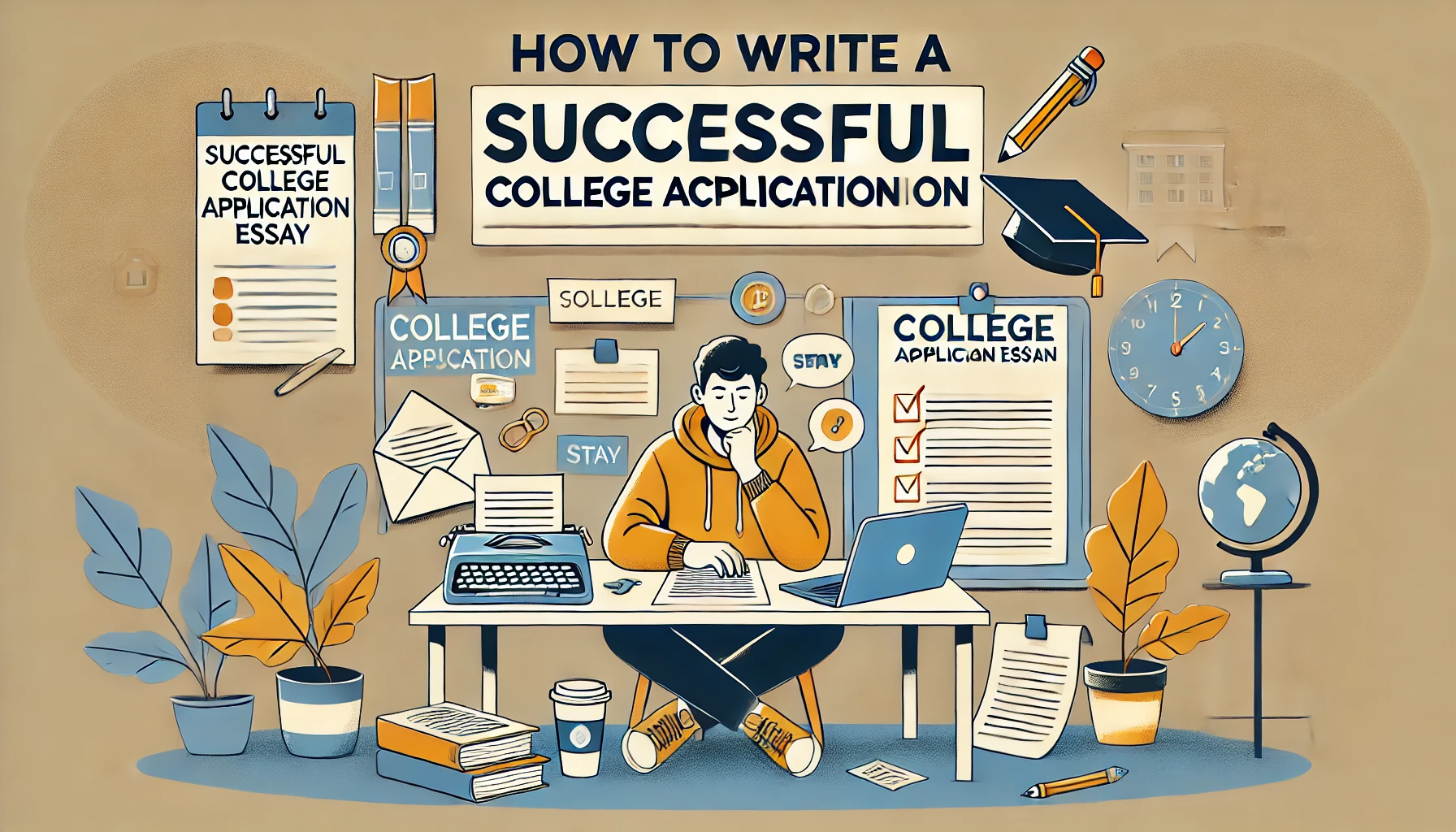How to Write a Successful College Application Essay

The college application essay is a critical component of the admissions process. It offers students a unique opportunity to present themselves beyond grades, test scores, and extracurricular activities. This essay provides insight into a student’s personality, values, and aspirations, helping admissions officers determine whether the applicant is a good fit for their institution. Writing a successful college application essay can be a daunting task, but with careful planning, creativity, and attention to detail, students can craft compelling essays that stand out. This article provides a step-by-step guide on how to write a successful college application essay.
Understanding the Purpose of the College Application Essay
Before diving into the writing process, it’s essential to understand the purpose of the college application essay. Admissions officers use the essay to evaluate a student’s writing skills, critical thinking, and ability to communicate effectively. More importantly, the essay reveals the student’s personality, experiences, and perspective, providing a more holistic view of the applicant.
Key Objectives of the Essay:
- Showcase Individuality: The essay allows students to highlight unique aspects of their identity and experiences that may not be evident in other parts of the application.
- Demonstrate Fit: Through the essay, students can demonstrate why they are a good fit for the institution, aligning their values and goals with the college’s mission and culture.
- Exhibit Writing Skills: A well-written essay showcases the student’s ability to express themselves clearly, creatively, and persuasively.
Step 1: Understanding the Prompt
The first step in writing a successful college application essay is to thoroughly understand the prompt. Many colleges provide specific essay questions or topics, while others may offer more general prompts, allowing students to choose their focus. Carefully reading and interpreting the prompt is crucial to ensuring that the essay addresses the required elements.
Tips for Understanding the Prompt:
- Read Carefully: Pay attention to the wording of the prompt and identify key themes or questions.
- Analyze the Requirements: Determine what the prompt is asking for, such as personal reflection, analysis of an experience, or a discussion of goals.
- Brainstorm Ideas: Start by jotting down initial thoughts and ideas that relate to the prompt, considering personal experiences, challenges, and achievements.
Example Prompt:
“Describe a significant challenge you faced and how you overcame it. What did you learn from the experience, and how has it shaped who you are today?”
Step 2: Brainstorming and Choosing a Topic
Once the prompt is understood, the next step is to brainstorm potential topics. The goal is to choose a topic that is meaningful, personal, and allows for deep reflection. A successful essay topic should be specific enough to provide focus but broad enough to explore various aspects of the student’s personality and experiences.
Brainstorming Techniques:
- Personal Reflection: Think about significant moments in life, such as achievements, challenges, turning points, or learning experiences.
- Passions and Interests: Consider hobbies, activities, or subjects that are important and how they have influenced personal growth.
- Values and Beliefs: Reflect on core values and beliefs, and how they have shaped decisions and interactions with others.
Choosing the Right Topic:
- Be Authentic: Choose a topic that genuinely reflects who you are, rather than what you think admissions officers want to hear.
- Show Growth: Select a topic that demonstrates personal growth, resilience, or a shift in perspective.
- Be Unique: Avoid cliché topics that are overused. Aim for a fresh angle or a unique story that stands out.
Example Topic:
A student passionate about environmental activism could write about organizing a community clean-up initiative, the challenges faced, and the impact of the experience on their commitment to sustainability.
Step 3: Crafting a Compelling Introduction
The introduction sets the tone for the entire essay and grabs the reader’s attention. A compelling opening engages the reader from the start and makes them want to continue reading. It should introduce the main theme or topic of the essay and give a glimpse into the direction the essay will take.
Strategies for Writing an Effective Introduction:
- Start with a Hook: Begin with a surprising fact, a thought-provoking question, a vivid description, or a compelling anecdote.
- Set the Scene: Provide context that helps the reader understand the background of the story or the importance of the topic.
- Make It Personal: Use the first-person narrative to create a personal connection with the reader.
Example Introduction:
“As I stood knee-deep in the muddy riverbank, surrounded by plastic bottles and debris, I realized that my small town was drowning in waste. That day marked the beginning of my journey as an environmental activist.”
Step 4: Developing the Body
The body of the essay is where the main ideas are developed and expanded. It should include specific details, examples, and anecdotes that illustrate the student’s experiences, thoughts, and emotions. The body should provide a deeper understanding of the topic and highlight the student’s personal growth and insights.
Structuring the Body:
- Follow a Clear Narrative: Organize the essay in a logical sequence, whether it’s chronological, thematic, or by cause and effect.
- Use Specific Examples: Provide concrete examples that support the main points and bring the story to life.
- Show, Don’t Tell: Use descriptive language and sensory details to create vivid imagery and convey emotions.
Example Body Paragraph:
“Organizing the clean-up was no easy task. Convincing my peers to spend their Saturday picking up trash wasn’t exactly a popular idea. I had to learn how to communicate my passion for the environment effectively, appealing to their sense of community and responsibility. Slowly, my enthusiasm caught on, and soon, we had a team of volunteers ready to make a difference.”
Step 5: Crafting a Strong Conclusion
The conclusion is the final opportunity to leave a lasting impression on the reader. It should summarize the main points of the essay and reflect on the broader significance of the topic. A strong conclusion ties together the narrative and emphasizes the impact of the experience on the student’s life.
Tips for Writing a Memorable Conclusion:
- Reflect on the Experience: Discuss the lessons learned and how the experience has shaped the student’s character, values, or goals.
- Connect to the Future: Highlight how the experience will influence the student’s future plans, aspirations, or contributions to the college community.
- End on a Strong Note: Use a powerful closing statement, quote, or call to action that resonates with the reader.
Example Conclusion:
“This journey not only transformed my small town but also ignited a fire within me. I realized that one person’s determination could spark a movement, inspiring others to join the cause. As I look to the future, I am eager to continue my work in environmental advocacy, knowing that even small actions can lead to significant change.”
Step 6: Revising and Editing
Writing a successful college application essay requires multiple drafts and revisions. The first draft is just the beginning; refining the essay is crucial to ensure clarity, coherence, and impact.
Revising Tips:
- Check for Clarity: Ensure that the essay clearly conveys the main message and is easy to follow.
- Eliminate Clichés: Avoid overused phrases and generic statements that lack originality.
- Focus on Voice: Maintain a consistent and authentic voice throughout the essay, making sure it reflects the student’s personality.
Editing Tips:
- Proofread for Errors: Check for spelling, grammar, and punctuation errors. A polished essay reflects attention to detail and professionalism.
- Seek Feedback: Share the essay with teachers, mentors, or trusted friends for constructive feedback and suggestions for improvement.





